Business Spotlight: Q&A with Tamara Bobbitt of Foxtail Quilting
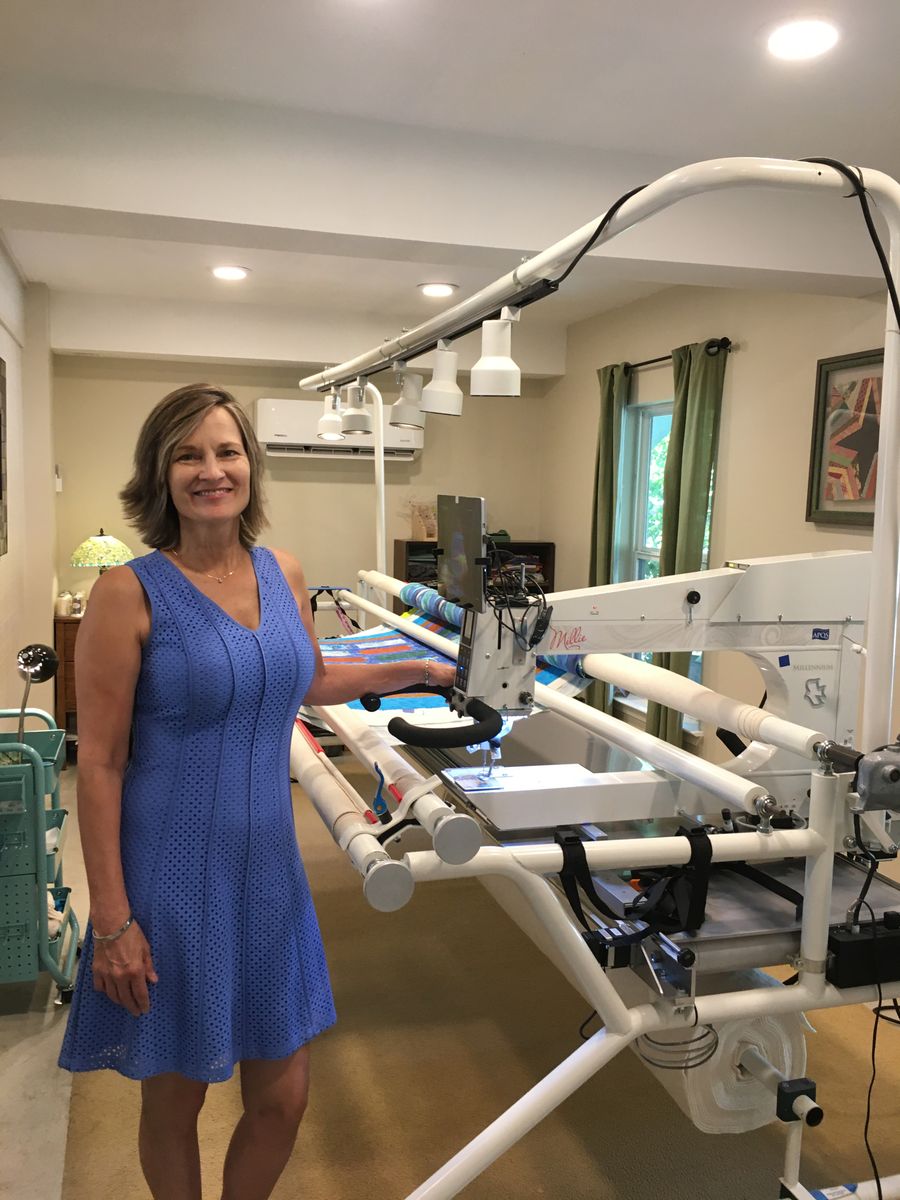
Tamara Bobbitt’s journey as a small business owner started when she made a T-shirt quilt for her son. Once folks saw her quilt, they wanted her to quilt for them, too. It is a testament to how small things build momentum when growing your business and customer base. We sat down with Tamara, who now runs Foxtail Quilting, to learn more about how she got started and what she loves about quilting for others.
How long have you been quilting?
I started when I was in my 20s but mixed it with other hobbies such as needlepoint and china painting. I have been longarm quilting since 2014 when I got my APQS Millie with Quilt Path and a 12” bliss frame.
How did you get into quilting for other people?
I made a t-shirt quilt for my son when he graduated, and people I worked with found out about it and began ordering quilts as gifts and referrals began to build.
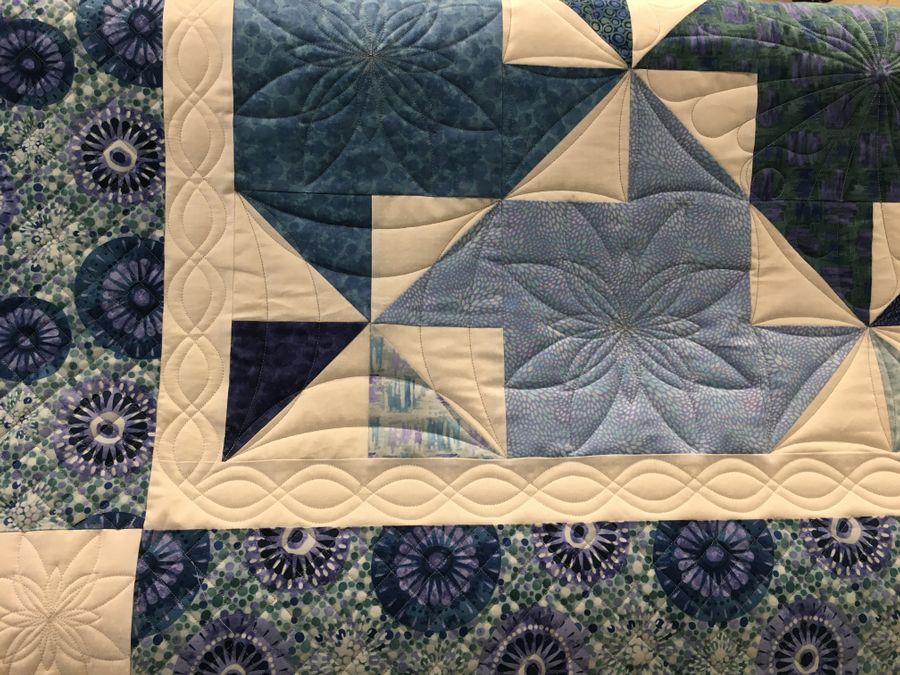
What types of quilting do you do most often for your customers?
My current business focus is primarily light to medium custom quilting and pantos. I have the Quilt Path computerized system on my Millie and I’ve enjoyed its new features, especially the border setting. I’ll still make an occasional T-shirt quilt.
Why did you choose the Millie for your business?
I purchased a longarm brand comparison book, read it and made my decision based on that. I wanted a top of the line machine and ongoing customer service, so APQS Millie was the best choice for me.
How have you grown your skills?
I have learned SO MUCH from fellow quilters, many books and countless online videos! Sometimes it does feel like 3 steps forward, 2 steps back and it’s difficult to see one’s progress as others do. However, my mom and husband are always supportive and are quick to remind me how far I’ve come. I try to keep up with the latest developments and enjoy attending Houston market (I’m really missing it this year!). I have a couple of go-to ladies whose work and accomplishments I admire and whose opinions I trust. Between those resources and doing my best to stay up on trending techniques and products, I have a reliable base of sources to draw from and am always thinking about what I can do better.
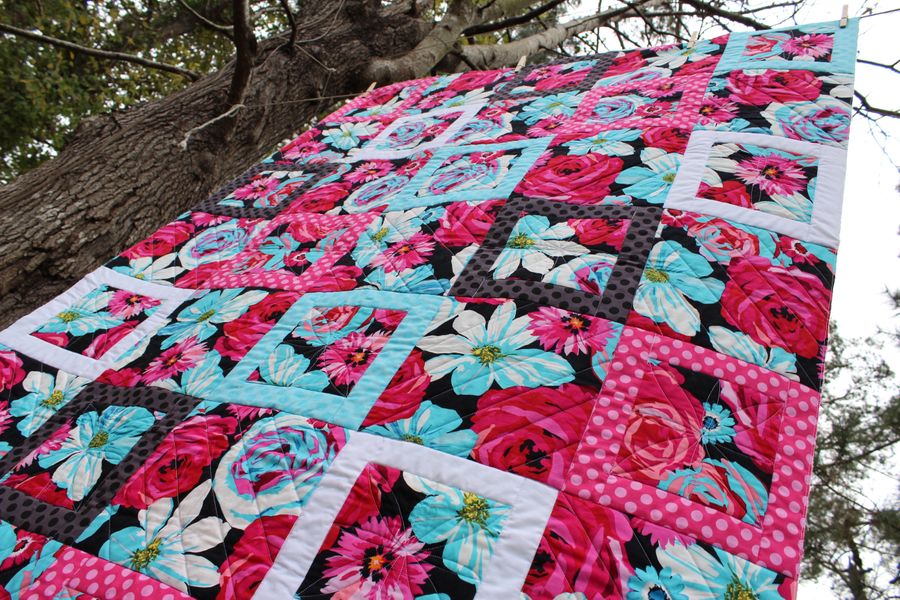
What is the most challenging part of quilting for you?
I’m a perfectionist when it comes to my end products, so I overanalyze and am by far my most intense critic. Fortunately, I am mechanically inclined, and I must applaud APQS — they consistently provide solid customer support and stand by their products.
As far as the business side, I don’t have an accounting or tech background, so those areas have been challenging, but it’s always rewarding to learn, and it helps to know people who excel in areas that I don’t. There’s always someone who knows the answer.
What advice would you give a new longarm quilter?
Every time you practice, you’re one step closer to being satisfied with your work!
Describe your studio and how you organize your longarm studio.
I started with a relatively tiny area and a lot of determination. My 12” Millie frame practically filled the efficiency apartment in the downstairs area of my home! But as the years progressed, we’ve been able to build out the area into about 400 square feet, plus a storage area and restroom for customers. I love that it has its own kitchenette (perfect for open houses). It has also become somewhat of a haven where I go to think, relax and create.
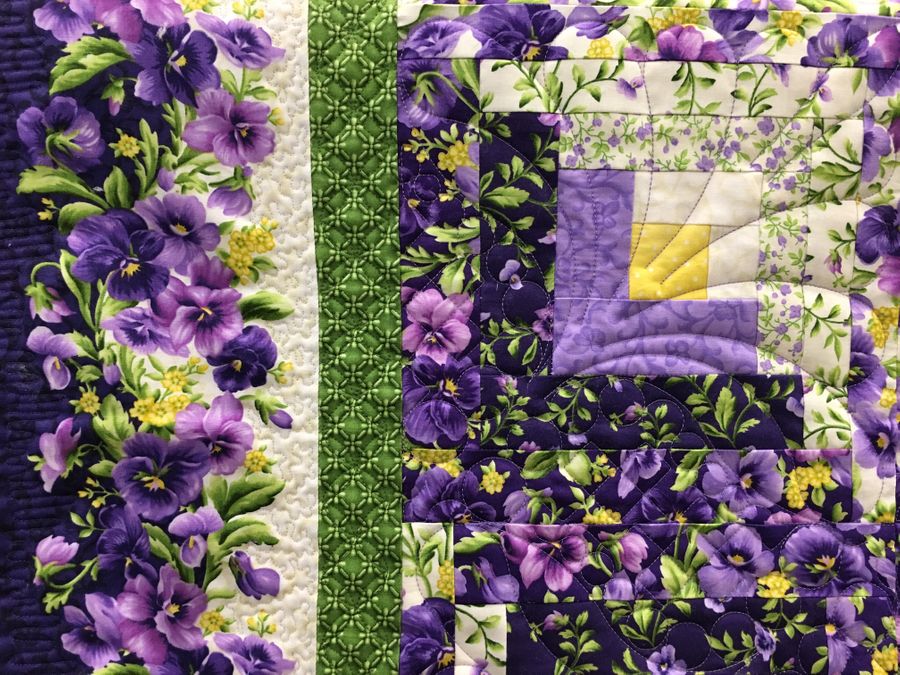
What is your favorite quilting gadget or ruler right now?
The Spray Mister Bottle by A Quilter’s Corner (always a mist, every time!) — the perfect bottle for Best Press! I watched a video of someone using starch for wavy borders, so anytime I have bulk or wavy borders, I use the Spray Mister Bottle with Best Press, and 9 times out of 10 it can be pressed on the longarm frame (holding a towel underneath) and it’s problem solved.
What percentage of your customers are local and what percentage of folks mail you quilts? Which do you prefer?
About 75 percent of my customer are local and 25 percent are online. I don’t have a preference; I appreciate every project and purchase and see it as someone placing their trust in my services and ability to reliably provide quality end products.
Do you use an accounting software of some sort to keep track of your invoices?
Funny you asked, my 2019 tax accountant billed extra for sending information in a MAC format — I have since purchased QuickBooks Desktop Pro and am learning to use it with plans to transition completely Jan. 1, 2021!
What is the best thing about quilting for others?
I LOVE it when they’re really happy with the job I do. It’s always a boost to receive a text or card by mail thanking me for a job well done. Being able to make a living is nice too!
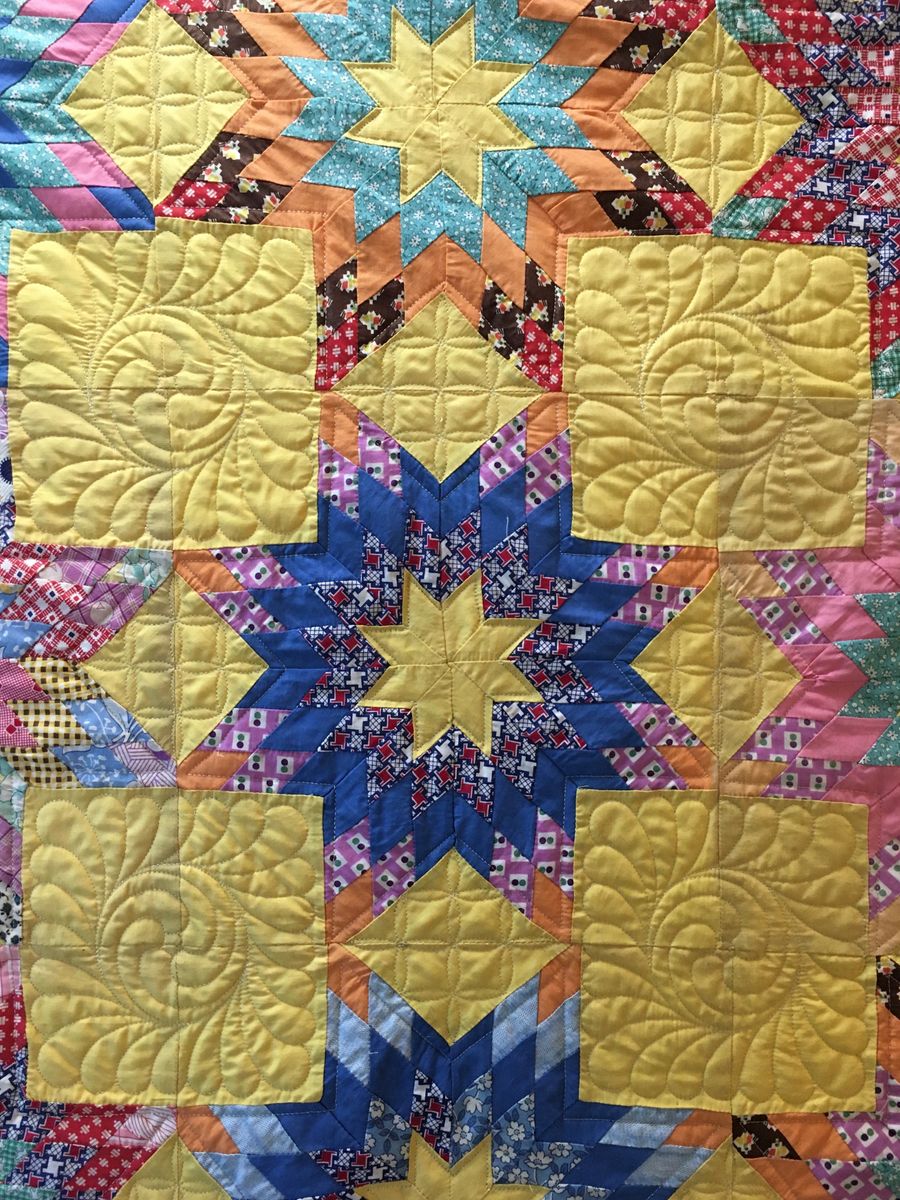
What is a downside to quilting for others?
Other than memory quilts and T-shirt quilts for others, I haven’t made a pieced quilt top in years so I haven’t really developed my skills in that area. While I would like to learn new piecing skills, I’m pretty satisfied with playing a vital part in giving my customers a finished product.
What advice would you give to someone who is thinking of starting a longarm quilting business?
Pursue excellence, research the local market, and take time to learn what you don’t know about running a business.
Get to know your competition and be genuinely friendly (“if you can’t beat ‘em, join ‘em”!). Have a good attitude and be yourself, customers will migrate to the best fit for them, and there’s enough for everyone.
Don’t let setbacks be something you think about when you lie in bed — rest up and get ready to spend the next day’s creative energy on the next project.
Avoid my biggest mistake and DO NOT blur the line between friends, acquaintances and customers too much — otherwise, you may find yourself in an awkward and/or unproductive position that’s difficult to deal with but has to be corrected.
Don’t be afraid to repair your own machine; whatever takes 4 hours today will probably only take one hour next time! I happen to enjoy mechanical processes and like learning how easy it is to “DIY.” I have never been disappointed with APQS’s customer support team.
If a customer has a complaint or issue, address it promptly to a satisfactory conclusion; don’t allow a period of silent cold distance — it can turn into an iceberg that they may be inclined to carry around and gossip about. It’s not worth it!
Research, get recommendations and take a class from someone your trust — it’ll ease your mind and build your skill set.
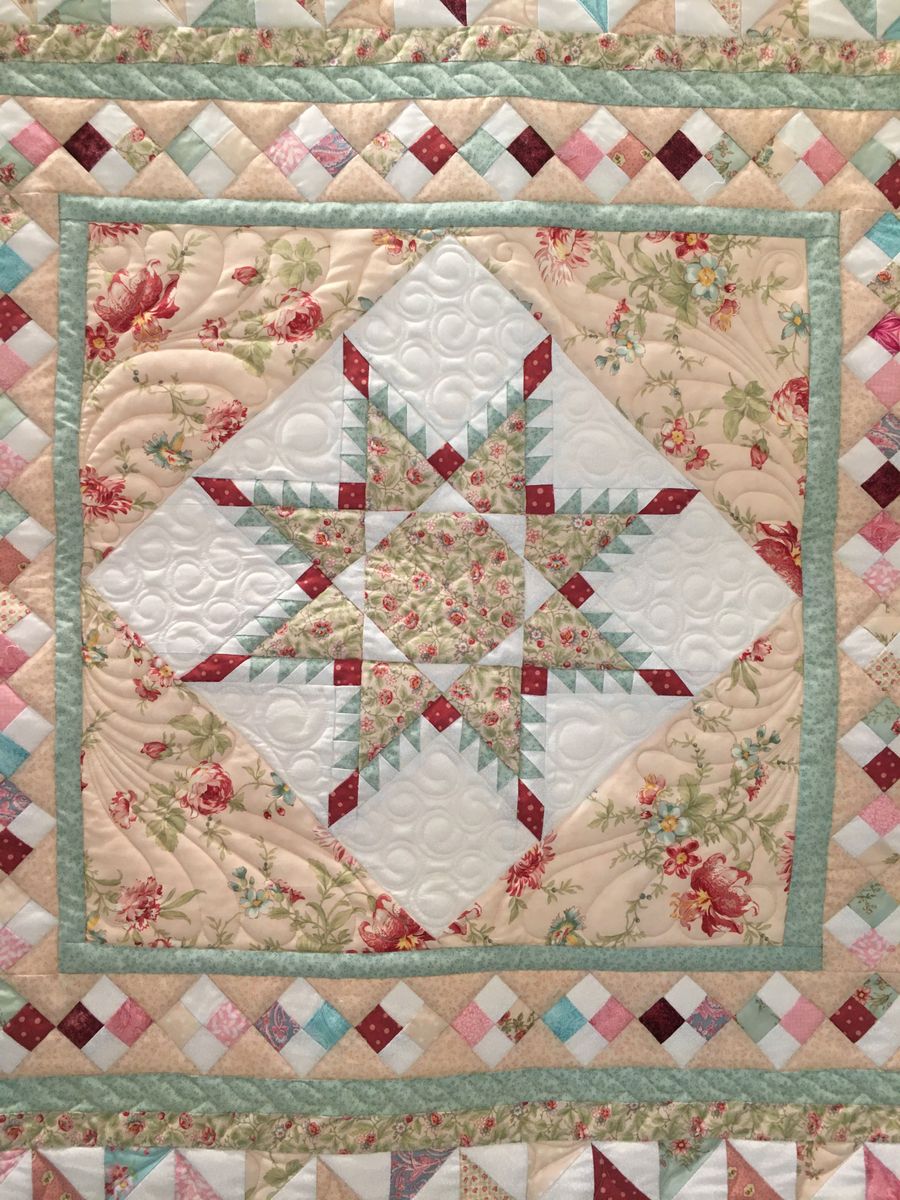
What are the top three pantograph patterns that you use for your customers?
- Loopholes by Sarah Ann Myers – everybody loves that one and it’s versatile and has a very different appearance depending on the scale of the design.
- Modern Twist by Patricia E. Ritter — It’s in the “budget friendly” category and creates a great texture on any quilt and it’s not too genre specific, so it’s great on vintage and modern quilts.
- Winter Forest by Melonie J. Caldwell – the perfect design for rustic and outdoor theme quilts or quilts made for men. It stitches out wonderfully and is ripe with intricate detail. I like the outdoors so it’s generally appealing to me.
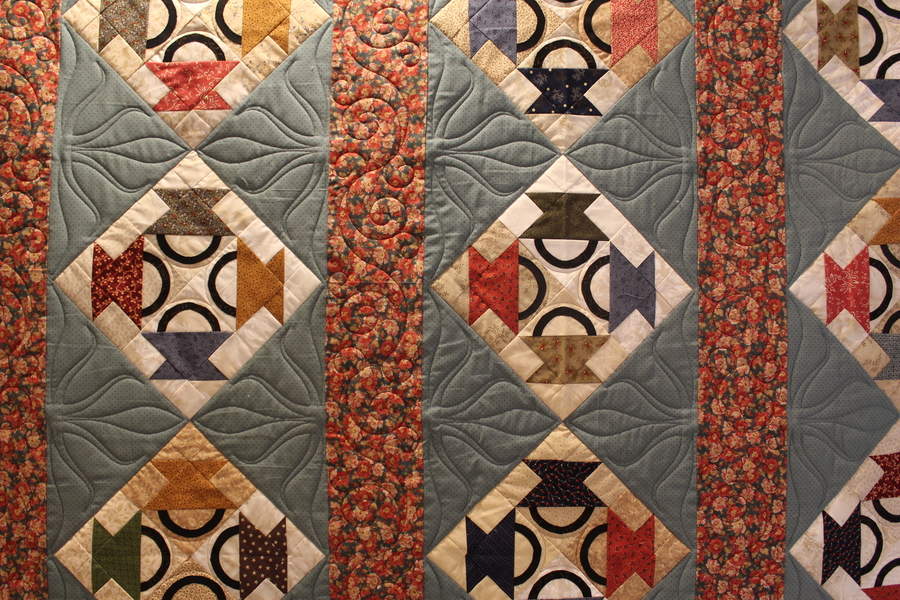
Is there anything else you’d like our readers to know about your business or about the machine quilting business in general?
It’s competitive, but there’s enough to go around, so be kind and do good. I pray and seek guidance from God too for design judgments and before major business decisions, whether it’s equipment purchases or affiliations with people and other businesses.
If you’d like to connect with Tamara, visit her website or visit her on Facebook, Instagram, Twitter or Pinterest.



